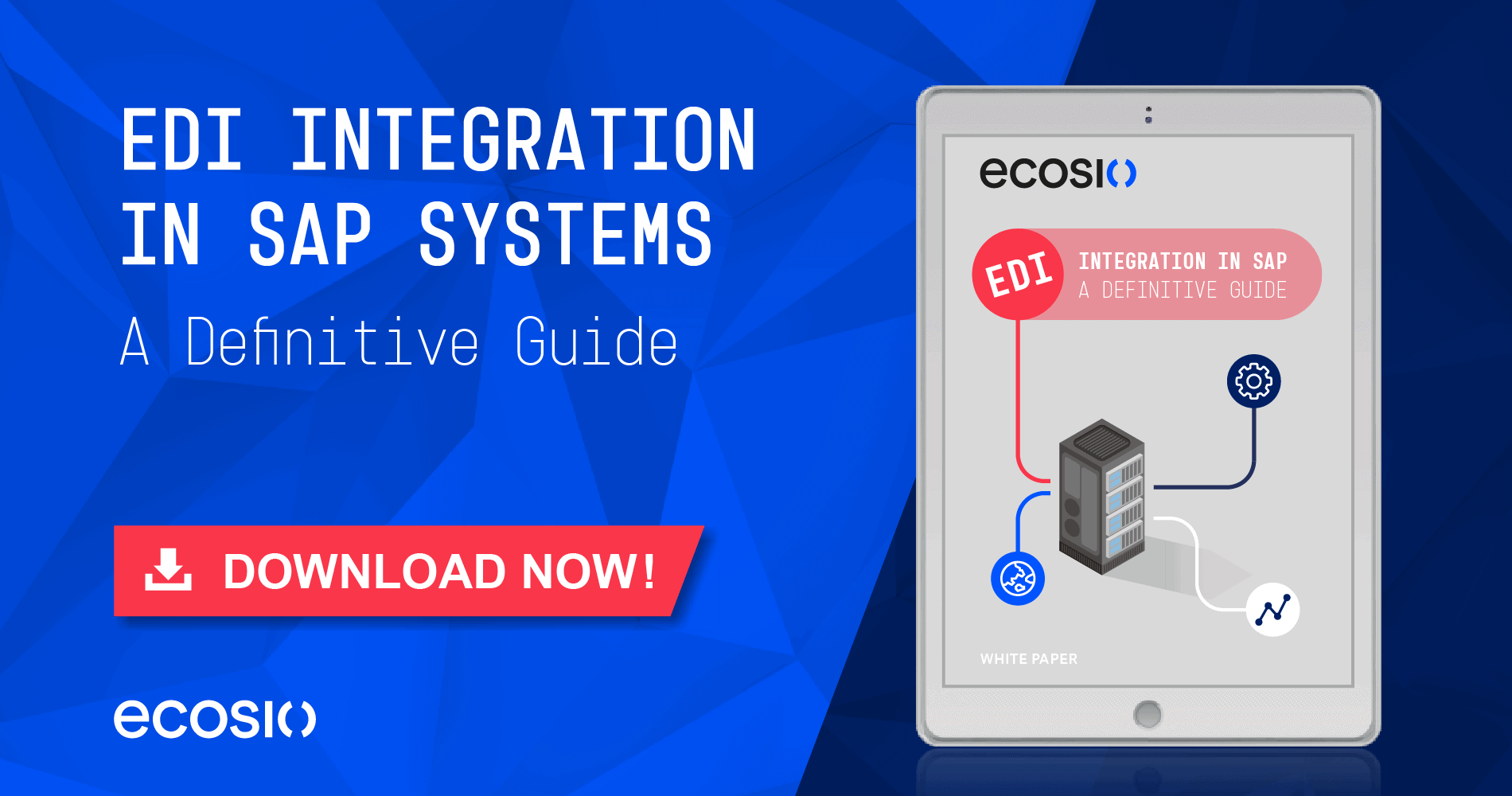Features of the SAP Business Connector
The SAP Business Connector is a separate software component that is installed and managed independently of the SAP system. By using RFCs (Remote Function Calls), functions can be called in another system, which enables communication with SAP and non-SAP systems. Both synchronous communication (sRFC) and asynchronous communication (tRFC and qRFC) are supported. As part of the data communication with external systems, the Business Connector is also able to convert between different formats. For example, an SAP-internal format can be converted into the customer or supplier external format (e.g. EDIFACT).
The following graphic illustrates this process in a simplified way:
Document Exchange with the Help of the SAP Business Connector
For example, companies can exchange IDocs and XML files with business partners using the HTTP(S), FTP, or E-mail (SMTP / POP3 / IMAP) communication protocols. However modern protocols, which are increasingly used in the field of electronic data interchange (EDI), such as AS2, OFTP2 or Peppol are not supported.
Any company with a valid SAP license can operate the Business Connector for free, which contributes to a widespread use of the software. However, with the end of the maintenance of the SAP Business Connector approaching at the end of 2020, companies must find a successor. Otherwise, smooth data exchange with customers and suppliers cannot be guaranteed.
Alternatives to the SAP Business Connector
Before deciding to replace the SAP Business Connector, a company must first clarify whether a local solution should be installed again or to it set to a managed solution.
Alternative 1: Install a local solution
A local solution is installed and operated similar to the Business Connector. This involves purchasing a software that is installed in the company alongside the SAP system. This solution performs data mapping between SAP documents and third-party formats as well as routing through the required channels. Companies must make sure that the new system supports all required formats and protocols of the business partners.
As a further local alternative, an SAP add-on can be installed, which takes over the conversion into different file formats. The difference to the previous solution is that the add-on runs directly in the SAP system and not in an external instance. Therefore, a routing software must be purchased additionally to this solution, so that documents can be sent and received.
The biggest disadvantage of a local solution is the associated cost. Companies must expect high initial and maintenance costs in order to always be able to operate the software with a state-of-the-art technology. To ensure the functionality and security of the system, regular updates must be made. Depending on the software which was selected, these updates may be subject to an additional charge.
The ongoing maintenance of the document mappings, the maintenance of the EDI connections (certificate exchange, parameter change, etc.) and the ongoing monitoring must also be included in the cost analysis.
Alternative 2: Change to a Managed Solution
A resource-saving alternative to the SAP Business Connector is to hire a service provider, such as ecosio, who offers a Managed EDI solution.
In this variation, the company’s SAP system is connected to the service provider’s external software solution, eliminating the need to install software in the in-house IT environment. For example, the ecosio.MessagingHub, which handles the data exchange, can be connected to the company’s system via a connector.
The service provider takes care of the conversion of the documents into the required formats, for example UBL for the standard XRechnung. The data is then sent via the required protocols, such as Peppol, AS2, X.400 etc.
The entire workflow is constantly monitored, thus preventing the transmission of faulty documents to business partners.
In addition, the service provider can also receive documents from partners and convert them into an SAP format. With the help of the service provider, the functionality of the SAP ERP system is extended so that all types of EDI traffic can be handled with customers and suppliers.
The EDI workflow between a company and its EDI partners is shown in the following diagram:
EDI Workflow with an EPO Connector and ecosio.MessagingHub
Businesses can use this to ensure that all processes in the EDI workflow are constantly monitored and that EDI traffic is maintained without disruption. Furthermore, the service provider keeps the systems up to date, which means there are no unpredictable costs for updates.
Due to the large number of supported file formats and transmission protocols, all EDI-specific requirements can be met. If, for example, a company gets a new business partner who demands a new file format, the data exchange can start without having to program extra software extensions – the service provider supports all common formats and protocols.
Summary
Due to expiring support for the SAP Business Connector, companies should look for a suitable replacement as soon as possible. Instead of buying a local converter again, an EDI service provider can be assigned to take care of the conversion and the transfer of documents between companies and their suppliers and partners. The big advantage of this solution is that companies do not face unplanned costs for updates. Also, it guarantees that the system is always state-of-the-art and therefore fit for the future.
Any questions?
Do you still have questions about the SAP Business Connector and its alternatives? Feel free to contact us, we would love to help you!
SAP ERP and SAP S/4HANA are the trademarks or registered trademarks of SAP SE or its affiliates in Germany and in several other countries.





